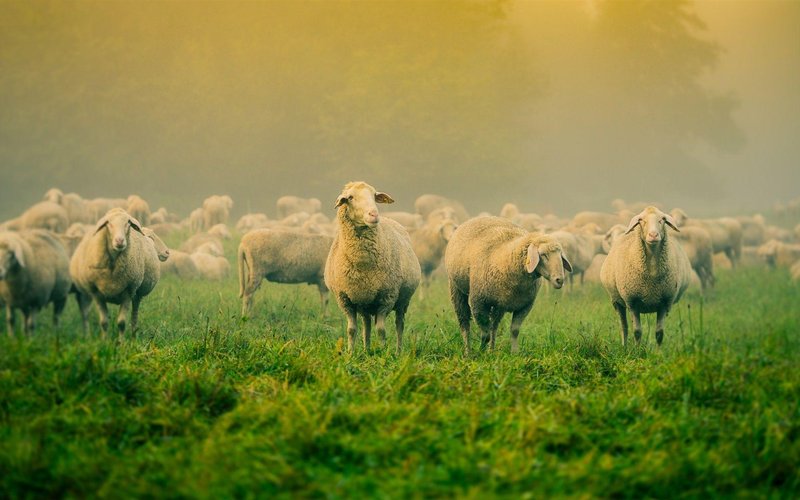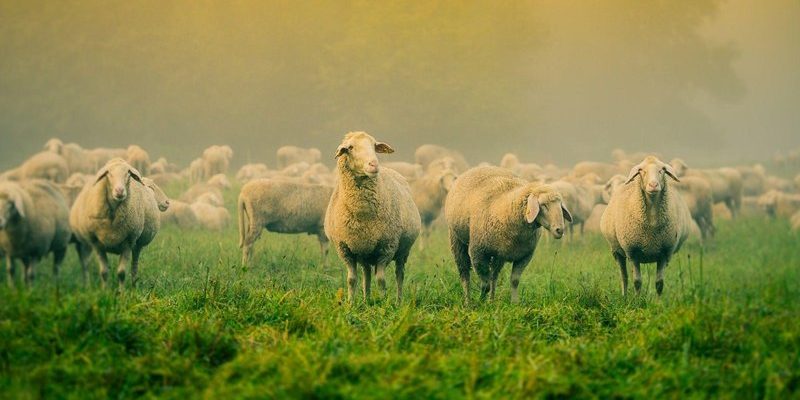
You might be wondering, “How does a humble sheep contribute to all of this?” Well, picture them as nature’s landscapers. By grazing on certain plants, they help control growth and promote biodiversity. Let’s dive deeper and explore the various ways that sheep impact their environment, from their grazing habits to their contributions to soil health and beyond.
Understanding the Grazing Habits of Sheep
Sheep are natural grazers, and they prefer to munch on grasses, herbs, and even shrubs. This grazing behavior isn’t merely a dietary choice; it has significant ecological benefits. When sheep graze, they often target specific plants, which prevents any one species from dominating the landscape. This helps maintain a balanced ecosystem.
Additionally, their grazing can promote the growth of other plant species. If a sheep nibbles on the top of a grass blade, it encourages the grass to spread out and grow denser roots. This not only keeps the pasture healthy but also supports biodiversity. You see, healthy pastures can support a variety of species, from insects to birds, creating a vibrant ecosystem.
Now, let’s think about overgrazing. While sheep are great for maintaining balance, if there are too many sheep in one area, they can damage the land. Overgrazing leads to soil erosion and loss of plant species. It’s like having too many chefs in the kitchen—they might mess things up instead of creating a great dish. So, managing their numbers is essential for a healthy ecosystem.
The Impact of Sheep on Plant Diversity
When sheep graze, they don’t just keep the grass in check; they also help foster plant diversity. By selectively eating certain plants, they make room for other species to thrive. Think of it as hosting a party and making sure everyone gets a chance to shine. If one plant dominates the landscape, it can choke out others.
This increased biodiversity is crucial for several reasons. First, more plant species mean more food sources for various insects and animals. For instance, wildflowers that bloom because sheep have grazed can attract pollinators like bees and butterflies, which are vital for plant reproduction.
Plus, diverse plant life can help stabilize soils, preventing erosion and maintaining soil health. And healthy soil means a better environment for everyone, including humans. So, the next time you see sheep grazing peacefully, remember they’re doing more than just munching; they’re caretakers of their environment, ensuring that a variety of plants can flourish.
Soil Health and Nutrient Cycling
Let’s talk about soil, the unsung hero of any ecosystem. Sheep contribute to soil health in some pretty fascinating ways. When they graze, they don’t just eat; they also fertilize! Their droppings return valuable nutrients back to the earth, enriching the soil. It’s nature’s way of recycling.
In fact, the nutrients found in sheep manure can help promote the growth of healthy plants. This creates a cycle where healthy plants provide more food for the sheep, and in turn, the sheep enrich the soil for those plants. It’s a beautiful give-and-take relationship.
Moreover, the act of grazing also encourages deeper root growth in plants. When the tops of plants are trimmed, the remaining roots can grow stronger and deeper. This not only helps the plants survive periods of drought but also enhances soil structure, allowing for better water infiltration and retention.
Supporting Other Wildlife
Believe it or not, sheep also play a role in supporting other wildlife. Their grazing habits can create habitats that various animals depend on. For example, their presence in a pasture can help maintain open spaces that are perfect for ground-nesting birds. Without grazing, these areas could become overgrown and unsuitable for nesting.
Plus, the diverse plant life that thrives thanks to sheep grazing attracts a range of wildlife. From insects to small mammals, many creatures benefit from the balance that sheep help maintain. It’s like a mini-community where everyone plays their part, enhancing the overall health of the ecosystem.
You might also find that certain bird species follow flocks of sheep, feeding on insects that are stirred up as the sheep graze. This interaction illustrates the interconnectedness of life in an ecosystem. When one species, like sheep, thrives, it can lead to a flourishing environment for many others.
Challenges and Management of Sheep Populations
While sheep have a lot to offer, they also come with challenges. Managing their populations is crucial to prevent overgrazing and land degradation. Proper management can mean the difference between a thriving ecosystem and a damaged one.
One effective method is rotational grazing, where sheep are moved between different pastures. This allows the land to recover and regenerate, improving soil health and plant diversity. It’s a bit like giving your garden a break; letting it rest helps everything bounce back stronger.
You might be thinking, “That sounds great, but isn’t it complicated?” Not really! Many farmers and land managers use simple techniques to track sheep movement, ensuring that grazing is balanced and does not harm the land. This way, sheep can continue to play their vital role without disrupting the ecosystem they support.
The Cultural and Economic Importance of Sheep
Beyond their ecological roles, sheep are also significant for cultural and economic reasons. Many cultures have relied on sheep for thousands of years, not just for meat and wool but also for their connection to the land. In many communities, sheep farming is a way of life that is passed down through generations.
Economically, sheep farming can be a source of income for many families. The products derived from sheep, such as wool, meat, and milk, contribute to local and global markets. Sustainable sheep farming practices can enhance economic stability while ensuring that ecosystems stay healthy.
By supporting sustainable sheep farming, you’re also supporting practices that benefit the environment. It’s like investing in a future where both humans and nature can thrive together.
Sheep might seem like simple animals, but their contributions to ecosystems are anything but basic. From promoting plant diversity to enriching soil and supporting wildlife, these creatures play a vital role in keeping nature balanced. As we appreciate the beauty of our environment, it’s essential to recognize the importance of every player in the ecosystem, including our woolly friends.
By understanding and valuing the role of sheep, we can work towards sustainable practices that ensure they continue to thrive in their environments. So, the next time you see a flock of sheep grazing in a pasture, take a moment to think about the bigger picture and all the ways they contribute to the world around us. It’s a reminder that even the smallest creatures can have a mighty impact.

